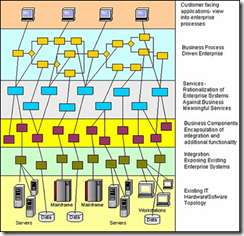Complex Software Architecture and your Startup
Every day I get exposed to different architectures and designs for systems. It’s a great contrast to see how a large company tends to have pretty complex software architectures compared to software I’ve designed outside the large company environment. There are many reasons for this, some of it is developers trying to show off, justifying their jobs, create job security, trying to be too clever or trying to be too helpful. Maybe the use cases or requirements were over engineered planning for every “What if” scenario under the sun.
The vast majority of the time it’s not malicious or has even a hint of bad intent. But most of the time on the developer side it’s science experiments that turned into production code or developers trying to make something too “pit of success’ie” without contemplating the drawbacks.
 Complexity carries a heavy burden that most developers don’t want to think about and instead look at architecture as the solution to every problem. But too often when simple problems are over engineered it causes more problems down the line. For a large company, this is ok, they can take the extra time, throw the extra money at it or add manpower. For a startup, especially a bootstrapped startup our best feature is agility, and if our software is too complex to be agile we are trying to win a marathon with our legs tied together.
Complexity carries a heavy burden that most developers don’t want to think about and instead look at architecture as the solution to every problem. But too often when simple problems are over engineered it causes more problems down the line. For a large company, this is ok, they can take the extra time, throw the extra money at it or add manpower. For a startup, especially a bootstrapped startup our best feature is agility, and if our software is too complex to be agile we are trying to win a marathon with our legs tied together.
What are some problems that arise from the dark art of architecture and complex system design and why are they bad for startups?
1. Complexity make debugging more difficult and tracing issues more problematic. The more complicated your system is, the more layers it has is more you will have to debug at 3:42 AM on a Tuesday morning when the production system seizes up. When you’re in a startup environment there usually isn’t a DevOps team to deal with those issues for you at odd hours.
2. Complexity creates friction to change. The more complexity the more you need to refactor or recode when you change directions. It’s also more time, and effort you loose when you throw away that system. You will be throwing away code, and lots of it over the life of your startup. When you go in add a new feature or recode something you can then go in and refactor.
3. Complexity systems take more time to code. In a startup environment the easiest, quickest, hacky, ugliest solution is almost always the right choice. The less time you spend on things the quicker you get stuff done and to your customers getting feedback propecia finasteride. Delivering is the most important thing. This isn’t to say you should push out totally buggy unusable systems, they need to work.
4. Architecture is not a deliverable. In the vast majority of cases this is true, but there are cases where this may be false. If your designing a system to say show people how to cook, your users don’t care how may layers you have, how you got CQRS and async full stack with DI and 100% coverage. Are those cool things? Yea, but they aren’t as important as us developers like to think they are.
5. It’s hard to bring new developers into complex system. In a startup environment development is probably one of the least valuable things you can do. As a founder you probably need to spend more time on business development, customer acquisition, planning features, marketing, etc. So you’ve reached that point and you want to bring in a technical founder, consultant or employee, the more complex your architecture the harder it will be for the new people to learn and longer it will be before they are up and running efficiently.
I’m not ‘anti-architecture’ or ‘anti-patterns’, instead I’m of the mindset that there is a time and a place for science experiments, architecture and complexity but rarely are those good for your early stage startup. I’m still trying to fight my inner architect when I develop for my startup, it’s difficult, but next time I’m up at 3:42 AM debugging an issue I’ll be a little more happy.